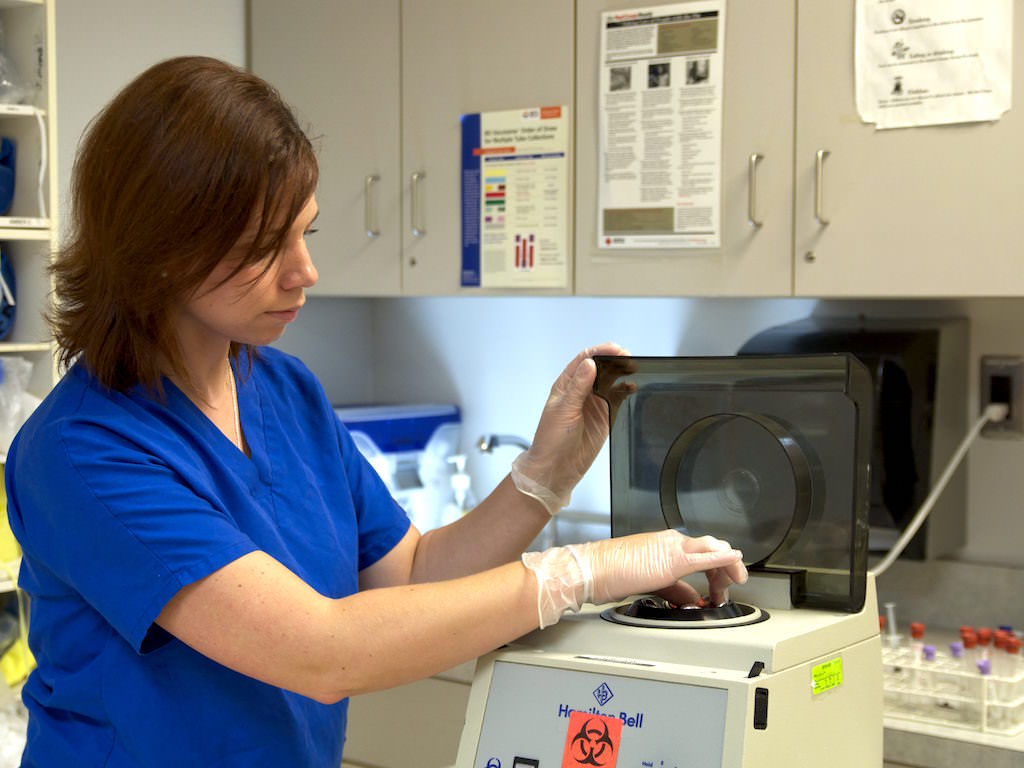 So you’re one of the the fortunate few that is not only not disgusted by blood but actually finds it fascinating?! If your answer is yes, read on! If it’s no, you may find yourself becoming interested by the end of this article. Blood is one of several bodily fluids and is made up of four main parts: red blood cells, white blood cells, platelets, and plasma. It constantly makes its way through our capillaries, veins, and arteries, carrying oxygen and nutrients to the various systems and tissues in the body.
So you’re one of the the fortunate few that is not only not disgusted by blood but actually finds it fascinating?! If your answer is yes, read on! If it’s no, you may find yourself becoming interested by the end of this article. Blood is one of several bodily fluids and is made up of four main parts: red blood cells, white blood cells, platelets, and plasma. It constantly makes its way through our capillaries, veins, and arteries, carrying oxygen and nutrients to the various systems and tissues in the body.
Right this moment, your blood is hard at work regulating your body temperature, getting rid of waste, and sending white blood cells antibodies to fight off infections. Blood is the, well, lifeblood of our bodies and is filled with interesting things and capable of incredible feats! Don’t believe it? Read on, and prepare to be amazed!

1. You have about 25 trillion red blood cells.
That’s right, 25,000,000,000,000 red blood cells! Of the approximately 100 trillion cells in your body, erythrocytes make up about one fourth of them! They are the most abundant cells in your body and make up nearly half of the volume of your blood.
2. About 8% of your weight is in your blood.
The American Society of Hematology estimates that about 8% of your body weight is made up of your blood mass. So, an adult with a weight of about 160 pounds would have about 13 pounds of blood while a child that weighs 80 pounds would have half that amount. A gallon of blood weighs around 8.85 pounds, so 160 pound adult has around 1.44 gallons of blood.

3. You have about 60,000 miles of arteries, veins, and capillaries.
If all of your circulatory system’s vessels were laid end to end, they could wrap around the world almost two and a half times! For every pound you gain, your body creates seven miles of new blood vessels, and for every pound you lose, it breaks down and re-absorbs those unneeded vessels!
4. White blood cells typically only make up about 1% of your blood’s volume.
While red blood cells are the most abundant cells in your body and make up almost half of your blood volume, white blood cells, or leukocytes, are much less common. However, the number you have can double overnight if your body is fighting an infection.
5. The lifespan of a red blood cell is about four months.
Your red blood cells are created in your bone marrow and then spend their lives traveling through your body and bringing oxygen and nutrients to the trillions of other body cells. Then, after they travel through your entire body about 250,000 times, they make their way back to the bone marrow to die. Then, their components are broken down and the iron they contain is used to produce new cells.
https://www.youtube.com/watch?v=R-sKZWqsUpw&feature=youtu.be
6. After donating a pint of blood, it takes the body just four to six weeks to completely recover.
Actually, within about 24 hours, the plasma component of your donation has already been reproduced and is circulating through your body! Your red blood cells typically take between four and six weeks to completely replace themselves in your bloodstream. For this reason, organizations like the American Red Cross require at least eight weeks between whole blood donations.
7. Your plasma is made up of 90% water.
Plasma is the liquid that the red blood cells, white blood cells, and platelets travel in throughout the body. In addition to the 90% of it that is made up of water, the other 10% includes things like immunoglobulins (a big, fancy word for antibodies), vitamins, hormones, cholesterol, protein molecules, sodium, and more!
8. Like many other traits, blood type is genetically inherited.

Humans beings have one of four basic blood types: A, B, AB, or O. Within those four are A+, A-, B+, B-, AB+, AB-, O+, and O-. In America, the most common blood type is O+, closely followed by A+. However, different countries and areas have different blood types that are the most common according to their genetic makeup. For example, in India, B+ makes up about 30.5% of the population, whereas in the United States, only about 8.5% have B+ blood.
Does this sound confusing? Just be thankful that you are human. We only have four main types of blood while cats have 11 types and cows have 800 types!
9. Blood cannot be manufactured.
Although we know what the components of blood are, at this point, it cannot be manufactured by anything other than the body! That means that the 6,800,000 blood donors in the United States that donate about 13,600,000 units of blood annually are responsible for all the blood available in the country.

10. Ability to receive from or give blood to certain people depends on blood type.
Often called the “universal donors,” those with type O- can successfully donate blood to patients of every other blood type. However, they can only receive from other O- donors. Conversely, AB+ donors can only give to others with AB+ blood, but can also receive from every other type of donor!
Want to learn more about blood and the other fascinating body systems and their functions? Check out the Ross Medical Education Center Medical Assistant training program! In our medical assisting program, you will also have the opportunity to receive phlebotomy training!
